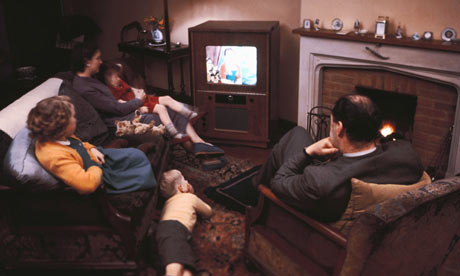On Wednesday morning, our team of 100 students filed into the grouproom for a "surprise" group homebase. It was my birthday, so I suspected that something was up. Ryan and AJ got up and stood in front of the group and said, "We made this video for Mr. Riley's birthday. We hope you enjoy it."
I was floored. It's amazing that they were able to gather all those students and teachers, record the exact phrases they needed, and use nothing but a smartphone and a flip camera. But that's not the point. The point is these kids spent all that time, energy, and effort to create something totally unique for me. And while I'm still trying to figure out why those boys picked "Back in Black" by AC/DC, I was truly touched because it was a gift from the heart.
It got me thinking about what a 1:1 laptop program is really about. We're in the midst of implementing one right now in the Middle School. The 7th grade roll out is complete, and there's much to celebrate. Our tech team designed a thoughtful and thorough "boot camp," and core teachers led subject-related modules with their students. Their collective work and experience will help guide the rest of the school's roll out in August.
In teams and in classes, it seems that many of our conversations are about the device. At this point, they should be. After all, when there are hundreds of laptops around the school, we all need to have common expectations. Not only that, as teachers, we need to think about how we can use them in the classroom.
When we get caught up focusing on the device though, we forget that a 1:1 program has to do with so much more. With my birthday video, for example, it wasn't about Ryan and AJ's phone or camera features. It was about how they used them to connect with others and tell a story. It was about how they used them to connect with me. In the end, "1:1" isn't between an individual and a device, "1:1" is between one individual and another individual. And when they connect, ideas are shared, and learning grows.
Just by chance, on the very same day, I "met" Jabiz Raisdana, a colleague at UWC via Twitter. Here's his take on technology and 1:1 that he posted on his must-read blog, Intrepid Teacher:
Technology shouldn’t be a gimmicky lure we use to “engage” kids. We use it when we can, when we must, when it makes sense. Otherwise we talk about writing. We write. We explore. Engagement is about passion and love for what we do. It is about getting on the floor and talking to kids about their ideas and giving them immediate feedback. 1-1 means that we try to spend time with each student discussing their work, not speaking at a class about what they all should be doing. No amount of technology will motivate kids, if the pedagogy and the content and the teachers love for the material is not there.
Ryan, AJ, and their friends were motivated to create their video not because of technology. It was because of story, a way to tell it, and an audience to share it with. With the remixed 1:1, we'll have many more opportunities to communicate through a wider range of formats with a much greater audience. Here's how my students and I were motivated to communicate this week through 1:1:
 |
| Confessions of a Nincomtweet |
- My students wrote introductory "cover letters" to their 21st century pen pals at YIS, inviting them to read their blogs. They have since exchanged back and forth emails and commented on each others' blogs.
- I tweeted out a picture of them blogging along with a thanks to the tech coaches for connecting our classes. Hours later, I heard back from all of the coaches thanking us instead.
- Grade 8 teachers responded to a Google survey providing critical questions and inspiring ideas for our upcoming labsites.
- I continued building my virtual PLC on Twitter by following colleagues near and far.
- Grade 6 teachers started crafting a sample persuasive essay on why bottled water is all washed up on a shared Google doc.
Sure, with each of these interactions, there are devices involved and software to learn. As we learn them, I'm sure we'll stumble along the way, or we may even end up learning them from our students. That's okay, because when we do, we'll be connecting with others, sharing ideas, and learning every step of the way.











